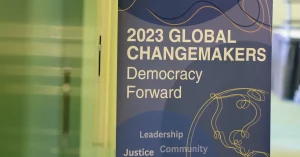HIGHLIGHTS
- RBI Annual Report offers different strokes on economy
- Lower RBI dividend for Govt as provisions see a five-fold rise
- Falling circulation of currency notes of Rs 2000 denomination
- Headwind for privatisation as proposals run into trouble
- Disinvestment receipts look up, set to exceed 2022-23 target
- Inflation on a rising spree, while industrial growth stays feeble
- High inflation spurs RBI on a monetary policy action overdrive
- Reducing liquidity and setting a goal of positive real interest rates
- Govt unveils a package of steps to manage commodity prices
- Controversies over measures on wheat and petroleum products
- Needless row over GST, days after its collections reach a new high
RBI Annual Report offers different strokes on economy
The annual report of the Reserve Bank of India for 2021-22, released in the last week of May, brings out out a candid assessment of the state of the Indian economy. This is the first report, where the central bank’s financial year has been aligned with the financial year of the government. Its reportage and analysis could thus be easily correlated with those of the Union government. On inflation, the Report notes that retail inflation had breached the 6 per cent mark in the fourth quarter or the January-March period of 2022, posing fresh monetary policy challenges. Looking ahead, it points out that inflation would be impacted by geopolitical aftershocks as close to three-fourths of the Consumer Price Index could be at risk. On growth, the Report is a little optimistic as it finds the economic recovery to be under way despite headwinds. A positive feature is the gradual increase in capacity utilisation in several industries, taking them closer to normal levels. With higher capacity utilisation, investments are likely to pick up creating fresh triggers for growth. The Report draws satisfaction from the fact that the non-performing assets or NPA problems that had been troubling the banks are now moderated to the lowest level in the last six years. What’s more, bank credit growth is also on the rise, almost tracking the trajectory seen in the nominal growth of the economy. It notes that liquidity of about Rs 2.2 lakh crore was withdrawn from the system during 2021-22 by way of monetary tightening, even while ensuring there is enough liquidity to meet the credit needs of productive sectors in the economy. By way of a broad hint to the kind of monetary policy that the RBI might pursue, the Report indicates that it would follow a nuanced approach in the wake of inflation risks from high commodity prices. The goal would be to calibrate the monetary policy while ensuring adequate liquidity to support growth aspirations in different sectors of the economy.
Lower RBI dividend for Govt as provisions see a five-fold rise
The Union government may be a little disappointed with the amount of dividend that the RBI has announced for 2021-22. In a year, when higher expenditure burden has put pressure on government finances, the Centre would have benefitted if the RBI had announced a higher amount of surplus to be transferred to the Consolidated Fund of India. Against Rs 99,122 crore transferred in 2021-22, the amount that the RBI would transfer to the Centre by way of surplus in 2022-23 would be a third lower at Rs 30,375 crore. Analysts noted that the lower-than-expected dividend was an outcome of higher provisioning as well as interest cost on liquidity adjustment facility (LAF) operations and revaluation loss on foreign securities. This was the reason why the RBI made a provision of Rs 1.15 lakh crore for its Contingency Fund in 2021-22, against a similar provision of just Rs 20,710 crore made in the previous year. Remember that the Bimal Jalan Committee had recommended that the RBI must always keep its Contingency Fund within a range equivalent to 5.5-6.5 per cent of its total balance sheet size. The RBI has decided to maintain its Contingency Fund amount at the lower band of the recommended level i.e., 5.5 per cent of its balance sheet size. Now, the RBI’s balance sheet rose by 8.5 per cent from Rs 57 lakh crore as on March 31, 2021, to Rs 62 lakh crore as on March 31, 2022. The increase in the provision for the Contingency Fund was occasioned also because of this factor.
Falling circulation of currency notes of Rs 2000 denomination
An interesting nugget of information revealed in the Annual Report of the RBI pertains to the composition of the currency notes that are in circulation in the economy. The value of currency notes of Rs 2,000 denomination, which had been introduced in November 2016 at the time of demonetisation, has seen a dramatic fall in the last few years. At Rs 6.57 lakh crore in March 2017, the value of currency notes of Rs 2,000 denomination accounted for 50 per cent of the value of all currency notes in circulation. At the end of March 2022, that value has fallen to Rs 4.28 lakh crore with a share of just 14 per cent. In contrast, currency notes of Rs 500 denomination had a share of 22 per cent in total currency in circulation as at the end of March 2017 and its total value was Rs 2.94 lakh crore. But at the end of March 2022, that share has gone up to 73 per cent with a value of Rs 22.77 lakh crore. While the share of total cash in the economy, as per cent of GDP, has gone up significantly in the last few years to over 13 per cent at the end of March 2022 (it was about 12 per cent of GDP at the time of demonetisation in Noveber 2016), the rapid increase in the share of notes of Rs 500 denomination and an even more rapid fall in the share of notes of Rs 2,000 denomination are developments that would be closely watched.
Headwind for privatisation as proposals run into trouble
The government has had to deal with a spate of setbacks on the privatisation front in May. Since the high of Rs 1 lakh crore of disinvestment receipts notched up in 2017-18, the annual revenue from disinvestment has been declining steadily in each of the four following years – to Rs 85,000 crore in 2018-19, Rs 50,000 crore in 2019-20, Rs 33,000 crore in 2020-21 and to Rs 13,000 crore in 2021-22. Of course, the privatisation of Air India in 2021-22 was a significant development, but it fetched only about Rs 2,700 crore by way of proceeds from the sale of 100 per cent of the equity of the airline. Air India sale was the first privatisation by the Modi government. Three other privatisation exercises during the current year, however, have met with no success. The 100 per cent sale of Central Electronics Limited and Pawan Hans Limited is now embroiled in legal and procedural controversies. The deals are unlikely to be completed in the current year. The proposal for the sale of the remaining 53 per cent government equity in Bharat Petroleum Corporation has been shelved as two of the three companies showing interest in acquiring the state-owned oil refiner and marketer withdrew their bids. The proposal would be taken up again after a review. The plan for privatising two state-owned banks is likely to be revived, but there is no clarity on its timetable yet.
Disinvestment receipts look up, set to exceed 2022-23 target
The government’s revenue from disinvestment in 2022-23, however, will reverse the declining trend witnessed in each of the last four years. Indeed, the government is poised to cross the disinvestment target of Rs 65,000 crore, it had set for 2022-23. Thanks to the initial public offer for 3.5 per cent shares of the state-owned Life Insurance Corporation, fetching Rs 20,516 crore for the government, and an offer for sale of ONGC’s shares valued at Rs 3,000 crore, the Union government’s disinvestment receipt in 2022-23 has already crossed Rs 23,000 crore. The government has now decided to sell its remaining stake of 29.5 per cent in Hindustan Zinc Limited during the year, which should fetch a revenue of over Rs 38,000 crore. With more than three quarters of the year still to go and already an amount of Rs 61,000 crore secured by way of disinvestment receipt, it is very likely that 2022-23 would see the target of Rs 65,000 crore to be exceeded. Some experts believe that the actual receipts could reach the record high level of disinvestment revenue reached in 2017-18.
Inflation on a rising spree, while industrial growth stays feeble
India’s retail inflation in April spurted to 7.79 per cent, the highest level since May 2014 or during the 8-year long tenure of the Modi government so far. The Consumer Price Index (CPI), maintained by the National Statistical Office, revealed that food inflation had jumped to 8.38 per cent in April, fuelled by a 17.3 per cent rise in prices of edible oils and a 15.4 per cent increase in prices of vegetables. Fuel inflation, too, accelerated to double-digit levels at 10.8 per cent, as retail prices of petroleum products rose in April. Providing no comfort either was the wholesale price index (WPI), which rose by 15.08 per cent in April on account of hardening commodity and vegetable prices. The April 2022 print of wholesale inflation meant that it was in double-digits for 13 consecutive months. More worrying was the fact that the 15 per cent inflation came over a 10.74 per cent wholesale price increase recorded a year ago. In other words, the inflation in April 2022 was steeper over an already high base of the same month of 2021. Contributing to the sombre mood over the economy was the industrial output number for March, which placed growth at just 1.9 per cent over the same month of 2021. The feeble number was attributable to less than 1 per cent growth in manufacturing, which has the highest weight in the index of about 78. But for the whole year of 2021-22, industrial growth showed a reasonable recovery at 11.3 per cent, compared to a contraction of 8.4 per cent in 2020-21. The recovery in 2021-22 was helped by both manufacturing and mining reporting growth at 12 per cent each, while electricity notching up a growth rate of 8 per cent.
High inflation spurs RBI on a monetary policy action overdrive
About a week before the release of the April data on retail inflation at 7.8 per cent, the Reserve Bank of India had launched a major monetary policy tightening drive. The retail inflation data was out on May 12. But perhaps anticipating that the number would be uncomfortably high, the RBI held an unscheduled meeting of its Monetary Policy Committee on May 4 and announced a hike in its repo rate (at which banks borrow from the central bank) by 40 basis points to 4.4 per cent. This was the first time in 45 months that the RBI raised the repo rate. In August 2018, the repo rate was raised to 6.5 per cent, up from 6.25 per cent set in June 2018. In a major shock to the market, the RBI Governor justified the 40 basis points increase with these words: “The strengthening of inflationary impulses in sync with the persistence of adverse global price shocks poses upward risks to the inflation trajectory presented in the April Monetary Policy Committee resolution.”
Reducing liquidity and setting a goal of positive real interest rates
Not just the repo rate, the RBI also increased the cash reserve ratio (CRR) to 4.5 per cent of the banks’ net demand and time liabilities, up from the prevailing rate of 4 per cent. The CRR is the share of a bank’s total deposit, which is mandated by the central bank to be maintained with the latter as reserves in the form of liquid cash that earns no return. CRR helps the RBI to reduce the cash liquidity of banks and keep a check on inflation. By raising the CRR by 50 basis points, the RBI planned to drain out Rs 87,000 crore of liquidity from the banking system. Subsequently, the RBI Governor clarified that more increases in the repo rate could be expected in the June 2022 review of the monetary policy. An indication of the upward trajectory of the repo rate could be had from an interview that he gave to a television news channel on May 22: “I have said that one of the reasons for the off-cycle meeting in May was that we did not want a much stronger action in June. The expectation of a rate hike is a no-brainer. There will be some increase in the repo rate but by how much, I will not be able to tell now…We will move towards positive real rates, but it is impossible to forecast how soon because of the evolving situation.” In a subsequent interaction with the media, the RBI Governor also gave an assurance that the objective going forward would be to avoid any shocks to the market. In other words, off-cycle increases in repo rates of the kind that was announced on May 4 are perhaps off the table for now. But more rate hikes are certainly on the anvil.
Govt unveils a package of steps to manage commodity prices
The Union government’s actions on taming inflation got highlighted only when it banned exports of wheat on May 13 or when it reduced the road and infrastructure cess on petrol and diesel on May 21. But in fact, the government began taking many small steps to rein in commodity inflation from as early as February 2022. These early steps were in response to the global shortages of edible oils and the hardening of their prices in all the major markets of the world. Almost 70 per cent of India’s total edible oil demand at home is met through imports. Not surprisingly, on February 14, it cut the Customs duty on crude palm oil and extended the reduction in basic Customs duty on edible oils. By March 30, the government extended the zero Customs duty facility on imports of tur and urad (two prominent varieties of pulses used in India) by a year, extended the memorandum of understanding with Mozambique for continued imports of these pulses and signed more agreements with Malawi and Myanmar to import tur. Sensing that cotton prices too have been rising, the government decided on April 30 to waive Customs duty on cotton imports until September 30, 2022. Clearly, the government has been an active player in the market intervening in the trade of these commodities through selective discretionary measures – a move that has upset trade policy experts because of the nature of these interventions.
Controversies over measures on wheat and petroleum products
The May 13 decision on banning wheat exports became a little controversial as there was a debate on whether India’s exports market and the interests of farmers and farm traders should have been subjected to such sudden policy shifts and sacrificed. Subsequently, the government relaxed the ban partially by allowing exports of wheat on letters of credit that had already been issued. The decision to cut the road and infrastructure cess on petrol by Rs 8 per litre and on diesel by Rs 6 per litre resulted in a decline in retail prices of these petroleum products. Some states also cut their value-added tax or sales tax on petrol and diesel to help douse the fire of inflation, even as there was some heated political exchange of words between the Centre and a few states on what more should have been done. On May 21, the Union government also took several other decisions on the inflation front, and these included the reduction in the Customs duty on raw materials for plastic products, a cut in the import duty on specific raw materials for steel, an increase in the export duty on some steel products and a subsidy of Rs 200 per every cooking gas cylinder under the Ujjwala scheme up to a ceiling of 12 cylinders a year. A couple of days later the government waived the import duty on crude soyabean and sunflower oils up to two million tonnes each, while an export cap of 10 million tonnes of sugar was imposed for the sugar marketing year ending September 2022. Indian sugar exporters were not concerned over the sugar export cap as they argued that in any case their exports would not have exceeded 9.5 million tonnes in the 2021-22 marketing year that would end in September. Policy experts also were critical of the discretionary and selective measures to impose physical restrictions on exports that could harm India’s long-term export potential in these sectors.
Needless row over GST, days after its collections reach a new high
The month of May was witness to two major developments pertaining to the goods and services tax. The GST collections figure for April reached a record high of Rs 1.68 lakh crore, surpassing the Rs 1.5 lakh crore mark for the first time since its rollout in July 2017. Collections in April 2022 were 20 per cent higher than Rs 1.4 lakh crore in the same month of 2021. The improvement in collections was noticeable more in the state GST, where they rose to Rs 42,000 crore, while the central GST collections were estimated at Rs 33,000 crore. Integrated GST collections in April stood at Rs 82,000 crore, of which Rs 37,000 crore were on account of imports. The improvement in GST collections could be attributed to tightened compliance measures and a crackdown on GST evaders and fake bills. Easier compliance and stricter enforcement also played a role in improving the collections. The euphoria over GST collections was adversely affected by the Supreme Court order declaring that the GST Council could not levy integrated GST on ocean freight. There was also a needless controversy over the apex court stating that the GST Council’s recommendations could be challenged. The Supreme Court only reiterated the rules as they currently exist and a needless controversy over a setback to the GST mechanism was created.
The previous issues of Indian Economy Review are available here: LINK
Supported by
………………………………………………………………………………………………
(The views expressed are personal)
………………………………………………………………………………………………

























